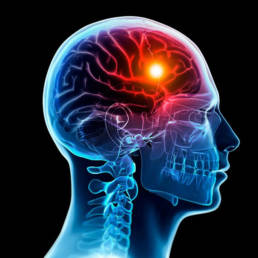In a study of adults who get chronic migraine headaches, shots of Botox cut down the total number of days they had them or even other types of headaches. They also had more “crystal-clear” — pain-free — days each month, and they reported fewer days off work.
In another study, nearly half the people who took two rounds of Botox shots reported that the number of days they had a headache each month was cut in half. After five rounds of treatment, that increased to about 70% of the people.
Doctors think Botox works for migraine headaches because it blocks chemicals called neurotransmitters that carry pain signals from your brain. Botox is like a roadblock in that pathway. It stops the chemicals before they get to the nerve endings around your head and neck.
Botox Treatment: Treatment consists of several shots of Botox around your head and neck once every 12 weeks to dull or prevent migraine headaches.
You may need 30 to 40 shots in all, and you’ll get an equal number on each side of your head. If you have migraine pain in one particular spot, you may need more shots there. You should expect to see results 2 to 3 weeks after your first treatment.
Traditional Treatment Options
Many of our patients come to us desperate for relief from their migraines as they have tried all the traditional treatments and get nothing more then partial temporary relief. The worse part of this is that getting this minor relief involves the use of prescription medications that often carry harmful side effects with them. Pain medications can mask the symptoms of migraine pain, but they are not doing a thing to address the underlying cause of the pain in the first place, which is why most of the traditional approaches to migraine care end up failing their patients.
“There has to be a better way” is the phrase we hear often from new patients, and the good news is that yes, today there is a much better way to treat migraines and other severe headaches and actually get full lasting relief.
- Many of our patients who complain about severe migraines and reoccurring headaches have had some sort of prior injury to their neck, back, or head.
- Injuries to the spinal cord area can come from work, sports, childhood injuries, slip and falls, or repetition injuries and can lead to more frequent and severe headaches.
- Whiplash strains tend to be the most common single injury that leads to migraines and worsening headaches, sometimes even years after the initial injury was sustained.
- It takes several years for the inflammation and swelling of a severe neck injury, to spread throughout the head and scalp area and trigger severe migraine symptoms.
- Tightness in the neck pinches nerves and damages tissue that can cause pain to radiate through the neck and head and intensify migraine flare-ups
- For people suffering from chronic headaches, the cause is often severe chronic inflammation or severe damage to nerves in the head and neck region.
Migraine Symptoms
The symptoms of migraine can include any number of the following and they can occur one at time, several at a time, and in any combination:
Moderate to severe pain that is commonly described as throbbing
Nausea, stomach upset, vomiting, constipation, or diarrhea
Headache that makes movement difficult
Loss of appetite and aversion to food
Sensitivity to light, noise, or strong odors
Paleness, sweats, and shivers
Sensations of being overly hot or cold during the worst of the headache
Fever in very rare cases though one may feel like he or she has a fever
Sleepiness, fatigue, and dizziness
Bright lights, dots of light, flashes, blind spots, wavy or jagged lines, and in-vision aura
Blurred vision and an inability to remained focused


